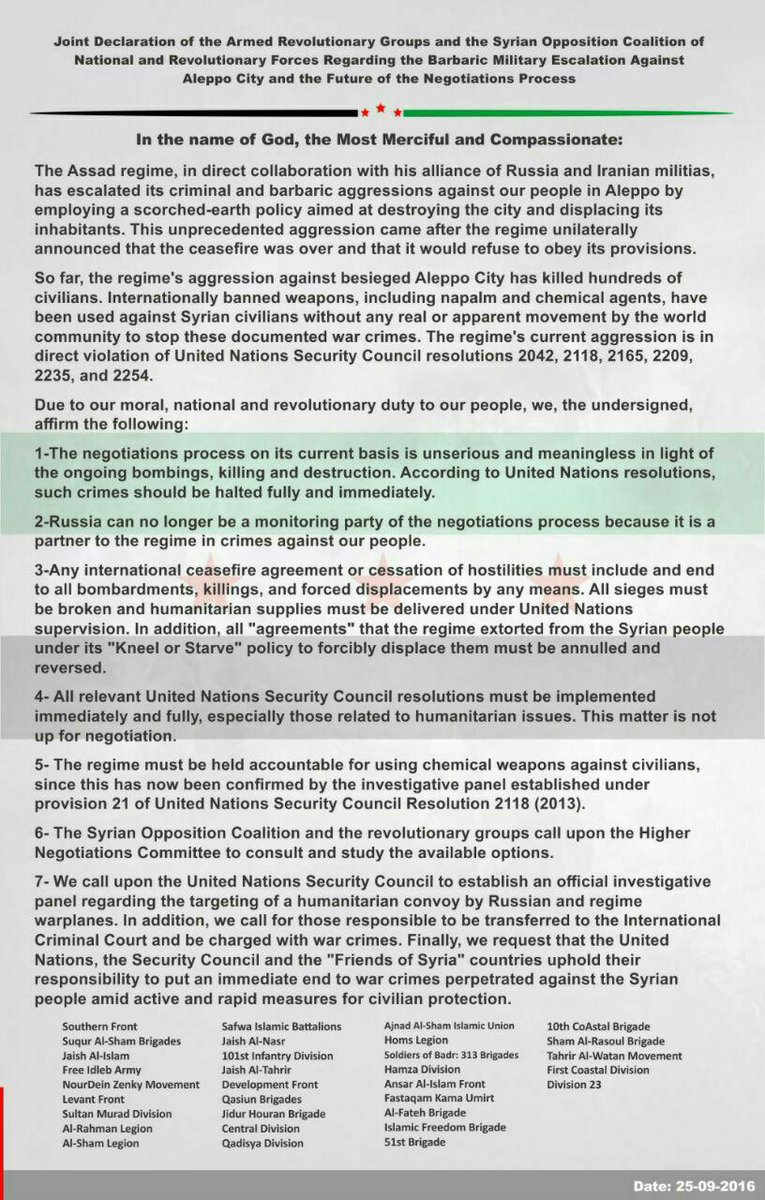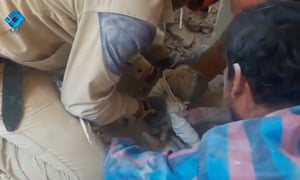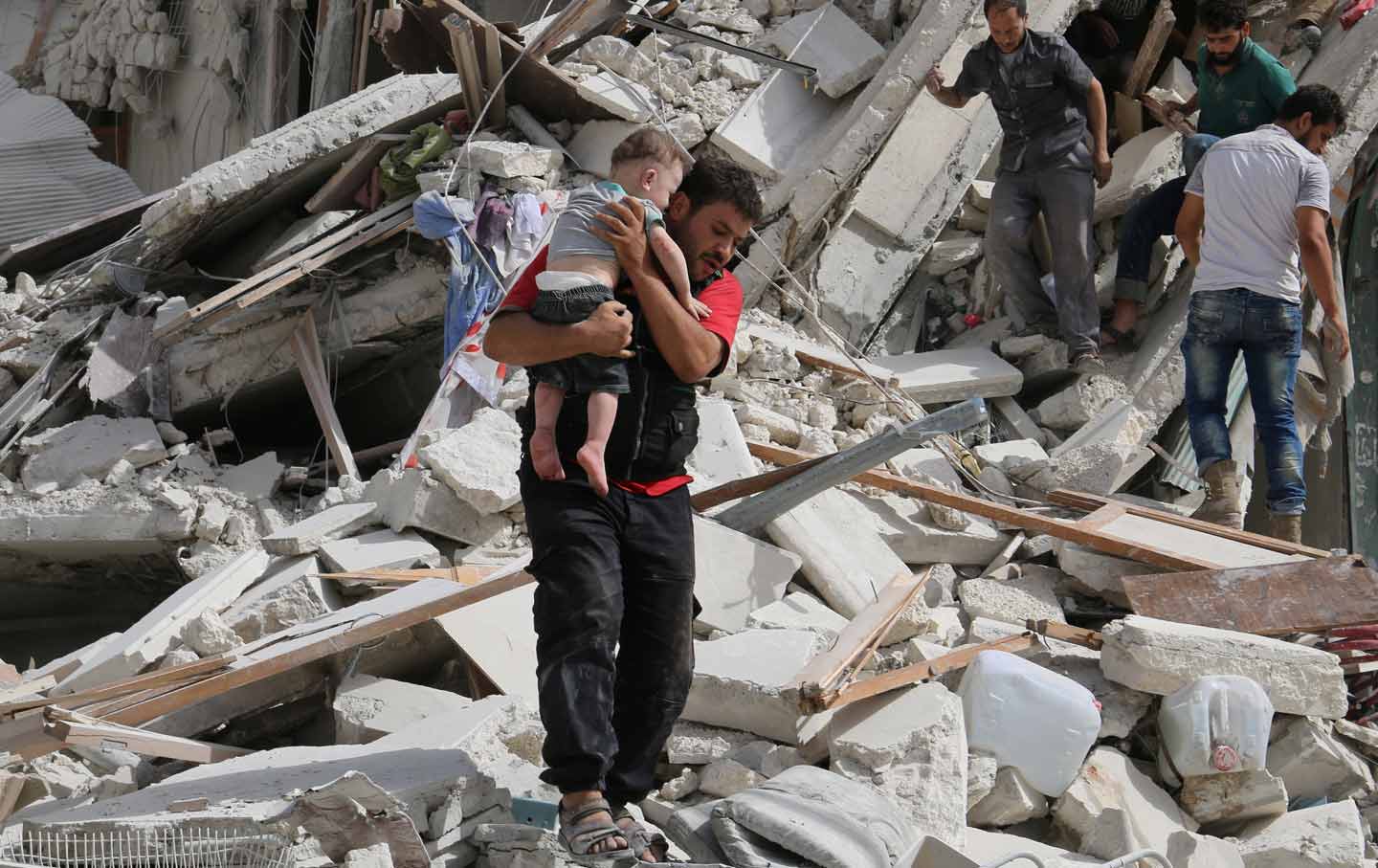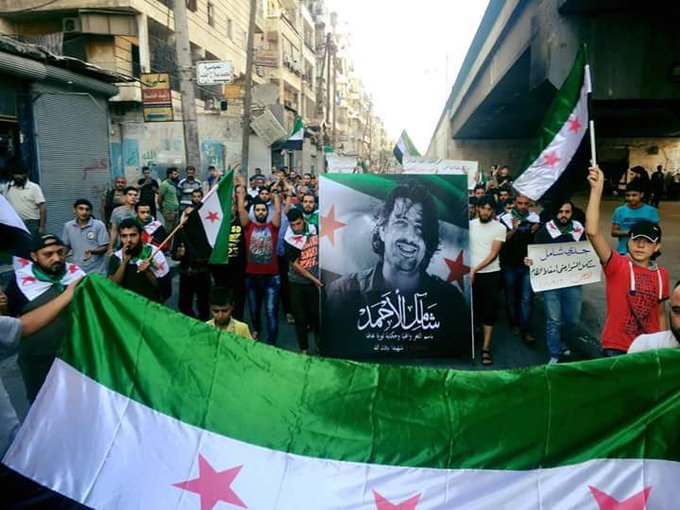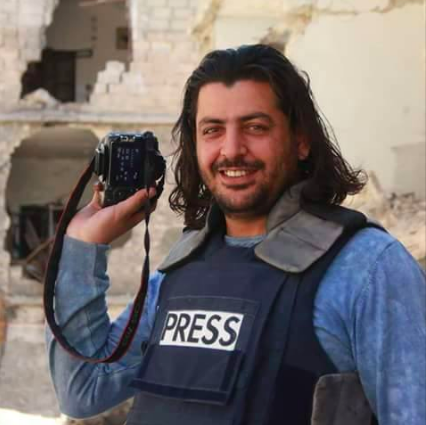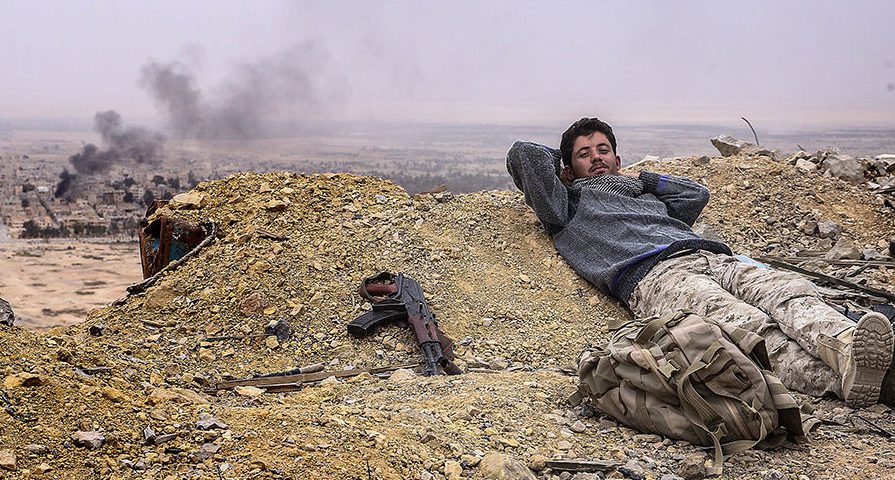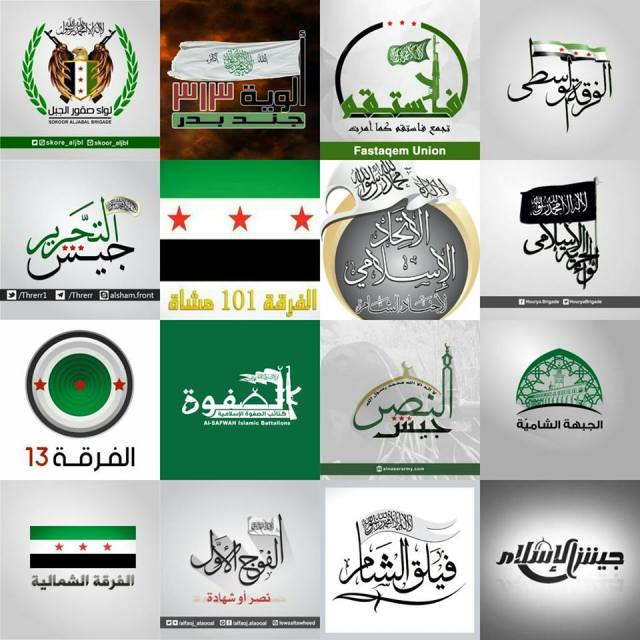 The Free Syrian Army
The Free Syrian Army
Statement regarding the proposed truce as part of the US-Russian agreement
"The false proponents of justice and freedom and the ‘guardians’ of human rights and democracy continue to insist on trading with the tragedy of the Syrian people and their corpses, taking from the Nakba [catastrophe] and ordeal of this poor population an arena for their competition and struggles for influence and interests, and a tinged road on whose sides drip the blood of the innocents in order to achieve some gains and ambitions, laying beneath their feet all of the meanings of justice and humanity and leaving behind their backs the demands for dignity and freedom.
Subsequently, a few days ago we received details of the /US-Russian/ agreement concerning a ceasefire to hostilities and a general truce in Syria accompanied by the entering of humanitarian assistance into the besieged neighbourhoods of the city of Aleppo, and after a careful study of those clauses and an in-depth reading of the whole of the internal and external challenges and the humanitarian and military realities on the ground and the complex political scene, the factions of the Syrian revolution view it as necessary upon itself to clarify to its people before anyone else the host of reservations it has with regards to this dry and unjust agreement:
– Firstly: The incredible humanitarian tragedy that our people and families are subjected to have always placed at the head of our priorities the necessity to improve the humanitarian situation of the rebelling Syrian people and especially in the liberated areas, and proceeding from this feeling of responsibility we have always taken care to evaluate international initiatives and truce proposals that are presented to us so long as they do not compromise any of the revolution’s fundamentals and its higher interests.
– Secondly: With our assiduous commitment to alleviate the burdens off our families we are nonetheless also assiduous in avoiding quick and temporary gains which are faced with certain dangers which will have a negative effect in the long run, such as some of the truces that may stop the bombardment and barrel bombs for a few days or allow the entry of limited quantities of food and medicine in exchange for hazarding the future of the revolution and losing strategic points and locations to the regime of criminality and its allies.
– Thirdly: The international unwillingness and indeed impotence to take any effective measures that can stop this massacre or ease the weight of the bombardment and siege of our people is no longer a secret, meaning that the only option remaining to us is to rely on our lord first and then on our self-capacities and the justice of our cause second, and to proceed in our battle against the regime and its allies until the last bullet in our rifles and the last fighter from our heroes.
– Fourthly: We welcome the decision to allow the entry of humanitarian aid to the besieged areas of Aleppo and we declare our full co-operation in the achievement of this, and the safeguarding of protection for the workers in international and humanitarian organisations; however at the same time we categorically refuse tying these assistances (which are a right for Syrians) with any locational truce or alleged political solution from which we have gained nothing until this hour but additional killing, destruction, displacement and overlooking of the killers and criminals; likewise we cannot ever accept any exceptions in the agreement’s clauses to the rest of the besieged ares exhausted by bombardment and siege, and whose people are being pressured by the “starve or kneel policy” pursued by the regime of criminality and terrorism to deliver these areas [to new settlers] and expel its local population as occurred in Daraya and is occurring now in Homs and the countryside of Damascus; this ethnic cleansing which it has become entirely evident is being conducted on sectarian bases which aim to create demographic changes in these areas, the matter which we will not accept under any circumstance and will resist with all means and ways available.
– Fifthly: The ceasefire terms in its current form leaves open the field for the regime and its allies to exploit it and commit more massacres against civilians and achieve strategic military gains that it was impotent to previously achieve which raises for us serious fears and doubts about the timing and clauses of this truce, for prevailing the long-term interest of the revolution is placed before momentary or temporary gains with our full trust that the regime and its Russian and Iranian allies and the rest of the terrorist border-crossing militias will never abide by them and will circumvent them with every means and methods.
– Sixthly: The ceasefire terms were vacant from any reference to real guarantees, monitoring mechanisms or clear and injunctive punishments in the event that the regime and its allies break this ceasefire; which will encourage them to break it and utilise it to achieve political and military gains (as in the previous occasions).
– Seventhly: The ceasefire clauses declared that the prohibition on regime warplanes sorties won’t occur except after 48 hours of truce have been completed, to be followed by another 5-day truce after which a “Joint Execution Group” will be formed to adopt monitoring mechanisms which we see as plenty opportunity for the regime to engage in more killing, destruction and [sectarian/ethnic] expulsion.
– Eighthly: The terms of the ceasefire have excluded Jabhat Fath al-Sham [The Front for the Conquest of the Levant] whilst it has completely turned a blind eye to the foreign sectarian militias that fight with the regime, and which have been committing its crimes since years in Syria with absolute freedom and without accountability or monitoring, and we consider this matter a dubious and rejected double standard. Accordingly we refuse the targeting of Jabhat Fath al-Sham or any other faction which fights the regime which could weaken the military strength of the revolution and strengthen the Assad regime and its allies.
– Concluding: We affirm that the Syrian people and its factions will never forget who killed them and who bombed them and who besieged them and who burned their cities and villages, and on the other hand they will not forget who supported them and stood with them in their plight and sacrificed in defence of their blood and honoured possessions.
Have trust that we will never settle for disgrace in the principles of our revolution and we will not give in to the pressures and cheap political and humanitarian blackmail that is being practiced against us, and we are are fully aware of the malicious traps that are set up for us in order to sink us in a swamp of concessions or lead us to infighting that tears the ranks and disperses the common word.
On the oath we remain, to the rope of God we hold fast and with his strength and might we seek recourse, not damaged by those who failed us, until we perish without [attaining] our right and freedom and dignity, or God writes for us victory and the prevailing of our revolution."
[Commonly-known name in bold]
Faylaq al-Sham [Levant Legion]
Harakat Nour al-Deen al-Zinki [Nour al-Deen al-Zinki Movement]
Al-Fawj al-Awal [First Corps]
Al-Ferqa 101 Mushah [101st Infantry Division]
Faylaq Homs [Homs Legion]
Jaish al-Islam [Army of Islam]
Al-Itihad al-Islami ly Ajnad al-Sham [Islamic Union of the Soldiers of the Levant]
Jabhat Ansar al-Islam [Supports of Islam Front]
Al-Ferqa 13 [13th Division]
Liwa’ al-Fath [Conquest Brigade]
Al-Ferqa al-Shamalia [Northern Division]
Al-Jabha al-Shamia [Levant Front]
Kata’ib al-Safwa al-Islamia [Al-Safwa Islamic Battalions]
Al-Feraq al-Westa [Central Division]
Tajamu’ Fastaqim Kama Umert [‘Be Upright as Ordered’ Union]
Jaish al-Nasr [Victory Army]
Jaish al-Tahreer [Liberation Army]
Liwa’ Suqoor al-Jabal [Hawks of the Mountain Brigade]
Liwa’ al-Horiya al-Islami [Islamic Freedom Brigade]
Jabhat al-Asala wal Tanmiya [Authenticity and Development Front]
Jond Badr 313 [Soldiers of Badr 313]
